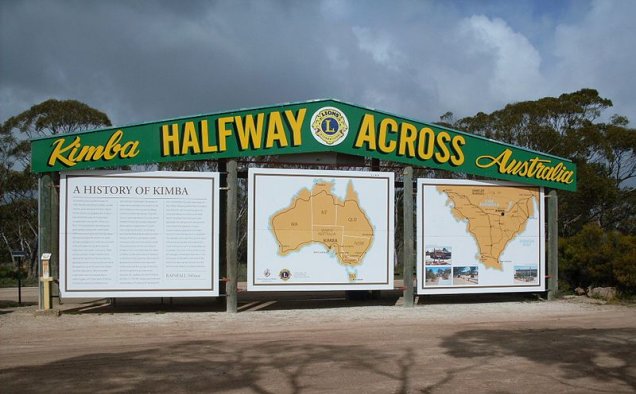
Kimba Looks To Solar Energy + Batteries – Image: Thom Devereux, CC BY-SA 4.0, Link
The District Council of Kimba is looking into the viability of using solar and batteries to provide backup power for important buildings in the Kimba township.
Kimba, home of the Big Galah, is a rural service town situated around 460 kilometres north-west of Adelaide; at the top of South Australia’s Eyre Peninsula.
Established in 1915, the town’s name was derived from an Aboriginal word meaning “bushfire”, which is a little unsettling. There doesn’t appear to be a great deal of bush in the township area these days, so don’t let that put you off visiting.
Like many remote towns, something that is a real challenge for Kimba is energy security. When the lights flicker in Adelaide, there’s an uproar; while the plight associated with rural residents’ sometimes unstable electricity supply is often ignored.
The Eyre Tribune reports the decision to investigate solar and battery backup was motivated by major blackouts in September and October last year.
“We have discussed with Regional Development Australia Whyalla and Eyre Peninsula about where solar concepts are going and are looking from really big picture, such as a solar farm, to what would be associated with running smaller sites,” said Council chief executive officer Deb Larwood.
Apparently, preliminary estimates put the cost of solar and battery storage for backup applications on par with diesel-based generation.
According to Council documents, Port Lincoln’s Alfredo Nistico has been charged with the task of presenting further information on backup power supply options for the Medical Centre, Council Administration Office and Kimba Pioneer Memorial Village Units at the May Council meeting.
As in many country towns across Australia, the good folks of Kimba are certainly lifters rather than leaners when it comes to installing solar panels.
While the postcode of 5641 has a tiny population (only around 650 people reside within the Kimba township and 1,211 in the district), 148 solar power systems are installed in the area with a collective capacity of over half a megawatt.
According to the most recent data from Australia’s Clean Energy Regulator, Kimba’s postcode also hosts 39 solar hot water systems.
More (and more consistent) power to you, Kimba!

 RSS - Posts
RSS - Posts



Speak Your Mind